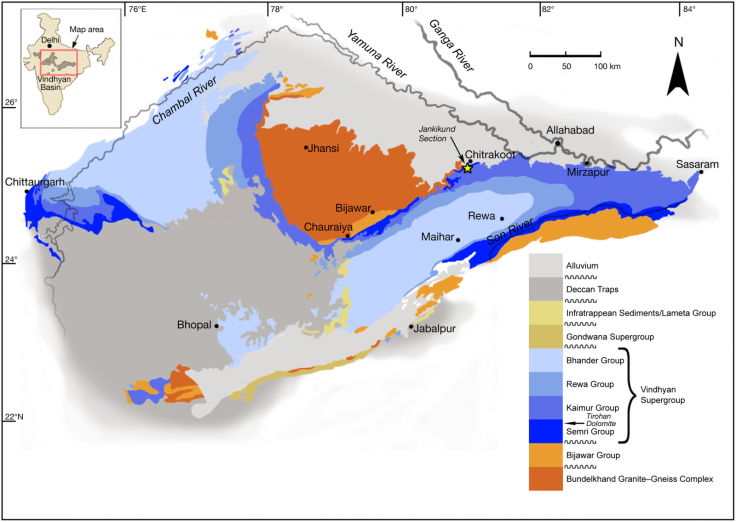1.6 billion-year-old plant-like fossil discovered in India may be the world's oldest
The discovery was made by scientists at the Swedish Museum of Natural History.

Swedish researchers have discovered multi-cellular fossils of red algae dating back 1.6 billion years from rocks in central India, making it possibly the world's oldest fossilised plant-like structure to be found.
The fossils embedded in sedimentary rocks in central India's Chitrkoot region were originally thought to be from the Cambrian period, nearly 540 million years ago. But a new scanning technology known as radiometric dating revealed these to be more than one billion years older than this, placing them in a time zone referred to as 'Boring Billion' between 0.8 and 1.8 billion years ago.
Previously, the oldest accepted fossil of red algae — or any form of complex or eukaryotic life — was from 1.2 billion years ago.
"This is the first time, from our point of view, that we've found something that we think can be confidently identified with known advanced multicellular plants," said lead author Stefan Bengtson, palaeontologist and professor emeritus in palaeozoology of the Swedish Museum of Natural History.
The preserved specimens contain structures like those found in red algae, which are technically not classified under plants. Like plants, algae perform photosynthesis but belong to a group known as the eukaryotes, which include all organisms with highly organised cells containing a nucleus.

Fossils of early eukaryotes are extremely rare, and studying them can be quite challenging.
"I got so excited!" said study co-author Therese Sallstedt, a researcher with the Department of Palaeobiology at the Swedish Museum of Natural History. "I had to walk three times around the building before I went to my supervisor to tell him what I had seen."
The full scholarly article was originally published by PLOS One.
© Copyright IBTimes 2025. All rights reserved.





















